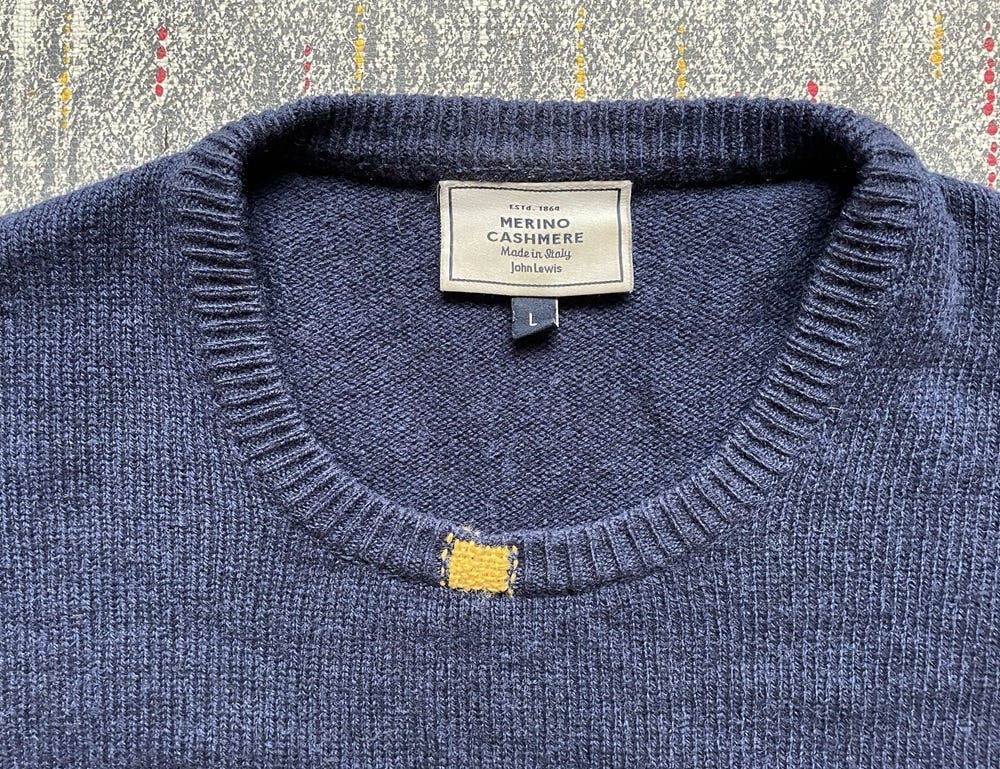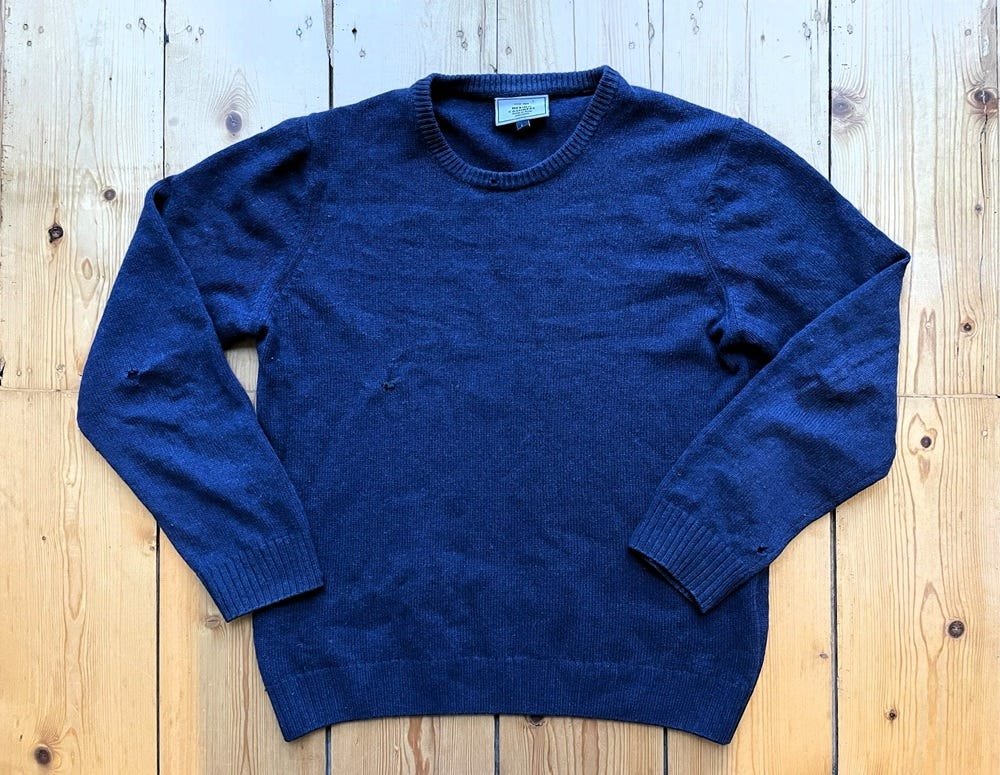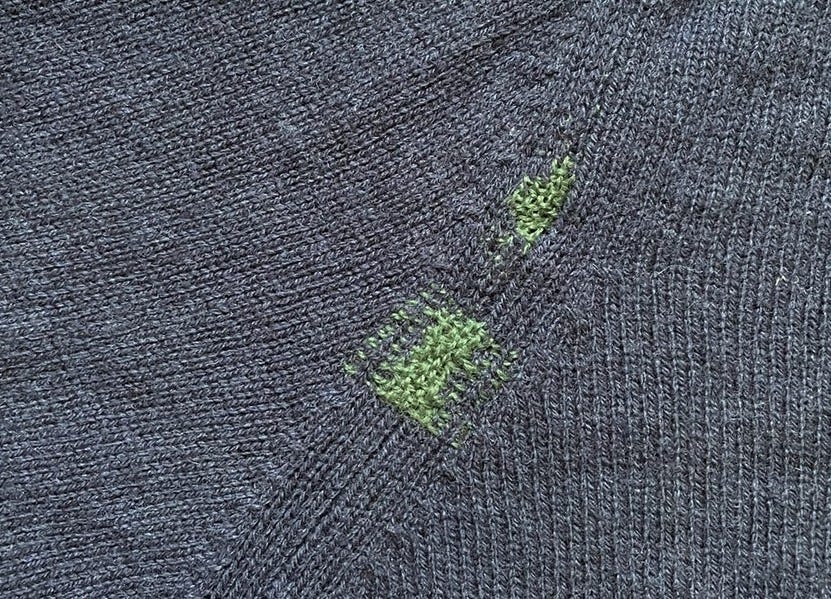You have a favourite woolen jumper. It’s well-worn but well-made and you feel good in it. It has a hole in one elbow, but it doesn’t stop you putting it on. Every year you look forward to wearing it when the weather turns Autumnal.
As you take it from your wardrobe you spot something unexpected…a shadow? A stain? Some fluff? You bring it into the light and it’s clear as day that your beloved knit has another hole. That’s not good. Then you peer closer and it’s evident that there isn’t just one offending hole. You suddenly see a few staring back at you.
And is that elbow hole significantly larger than you remembered? After cursing clothes moths with abandon, you wonder with a sinking feeling, is it worth repairing? Can it even be saved?
If you know how to darn, then I’d say it’s always worth saving a favourite knit. And if you don’t possess the skills, then maybe it’s time to learn! Or you could employ the services of a demon darner to bring new life to your wounded woollens.
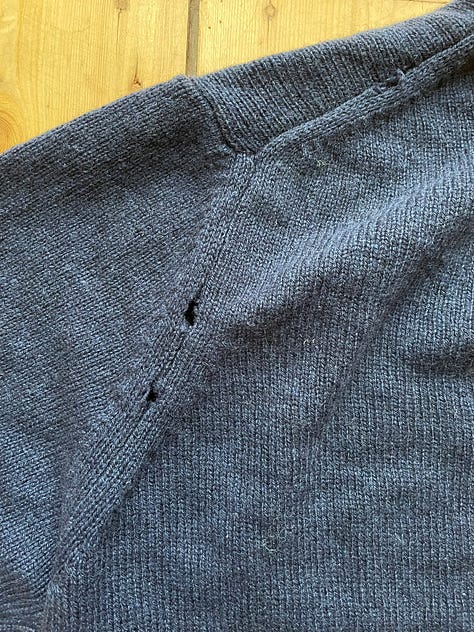
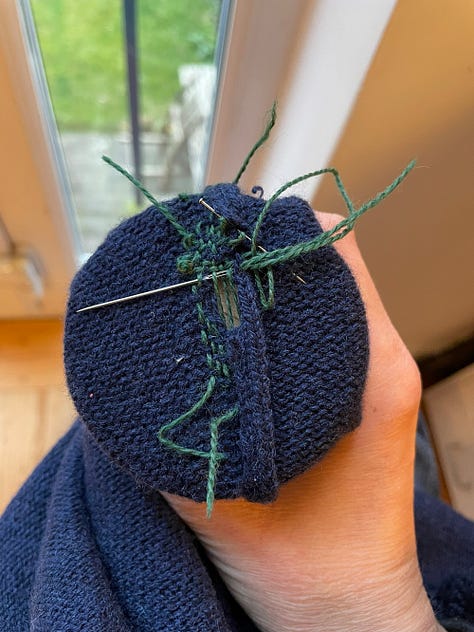
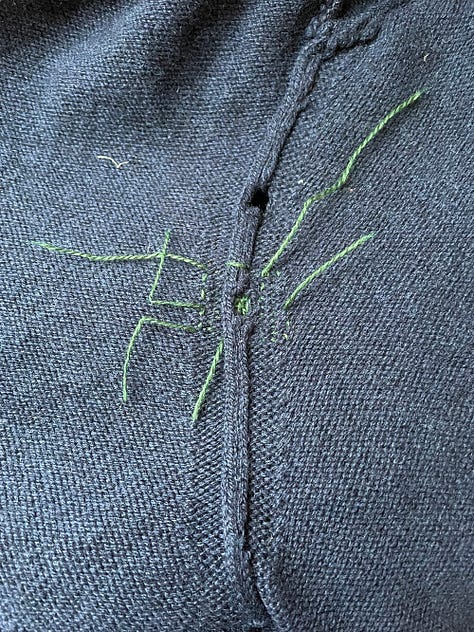
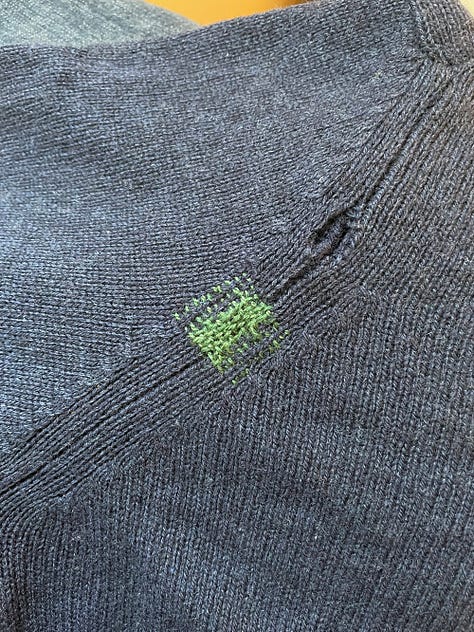
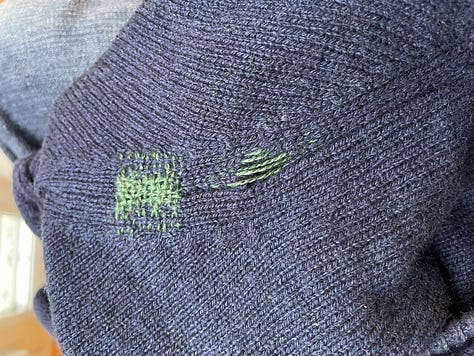
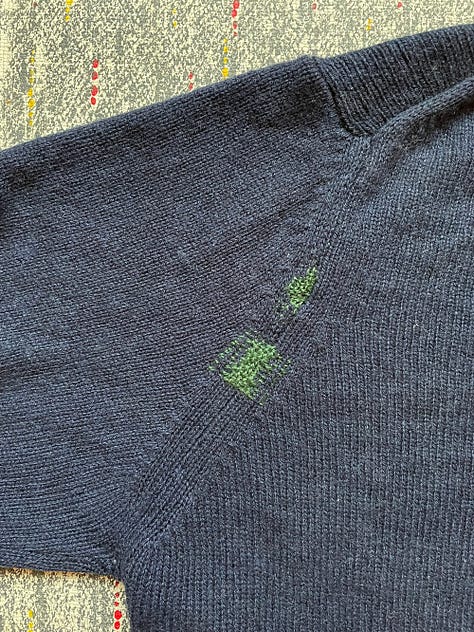
A little while ago I mended this merino/cashmere John Lewis jumper belonging to a client’s husband. She commissioned me to repair it as a gift to him, as he quite rightly didn’t want to say goodbye to his favourite knit, despite a not insignificant 13 holes.
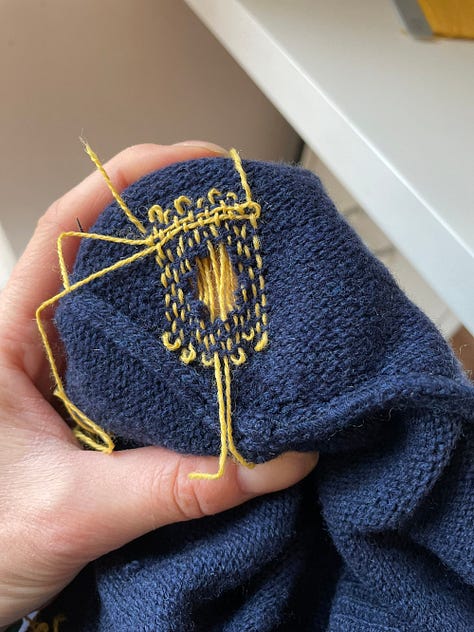

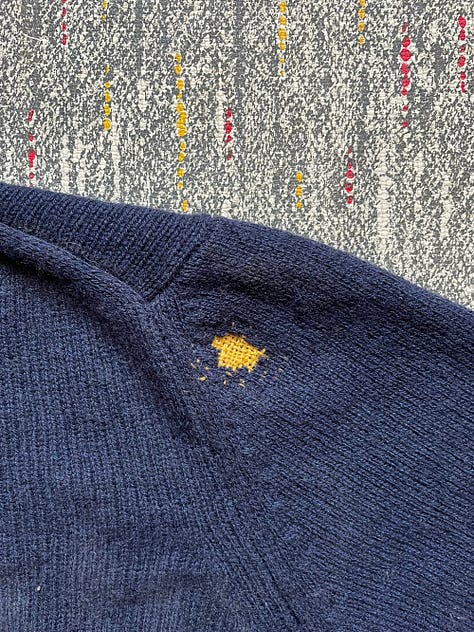
I used Scanfil darning yarn to repair the holes using a mix of a traditional stocking darn, done on the reverse of the jumper, and some little ‘patches’ that I wove on the outer surface.
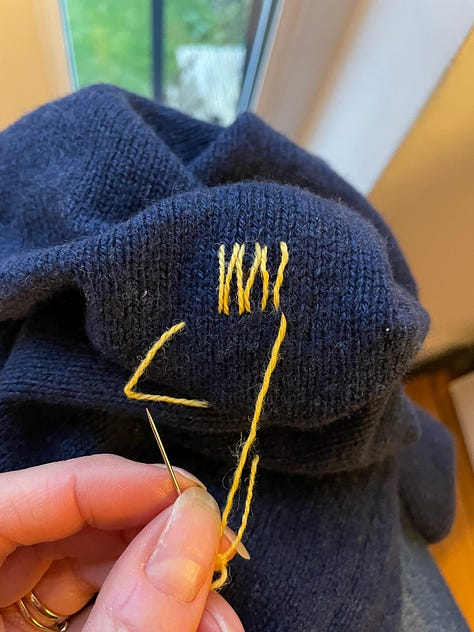
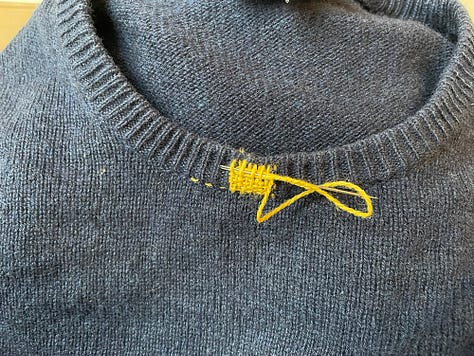
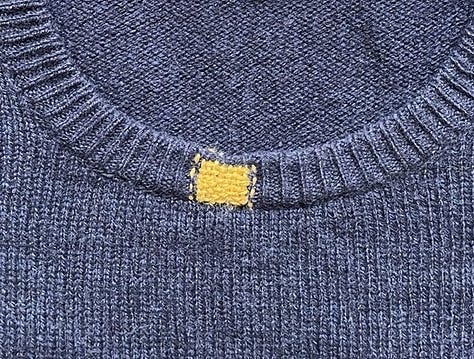
For the hole on the neckline, I chose to create a darned feature patch. Unless you are a repair wizard who can do totally invisible mending, then trying to do a colour-matched repair in such a visible area can just end up looking like a mark or stain. (I’ve made this mistake myself and will share the results sometime!)
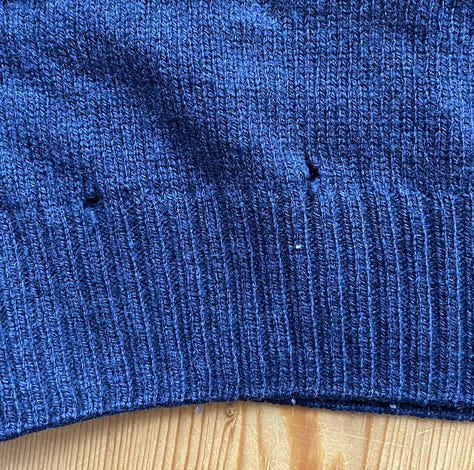
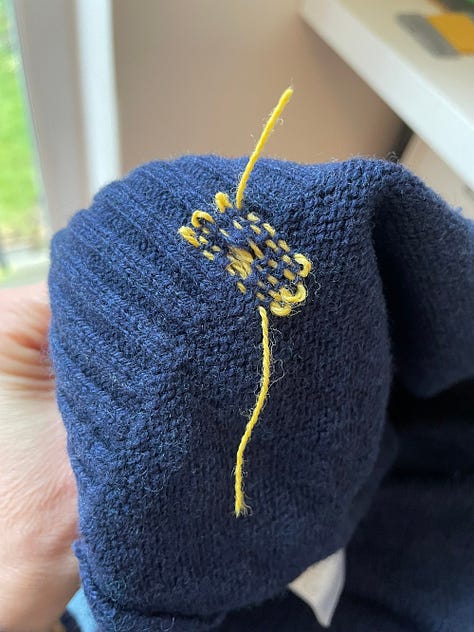
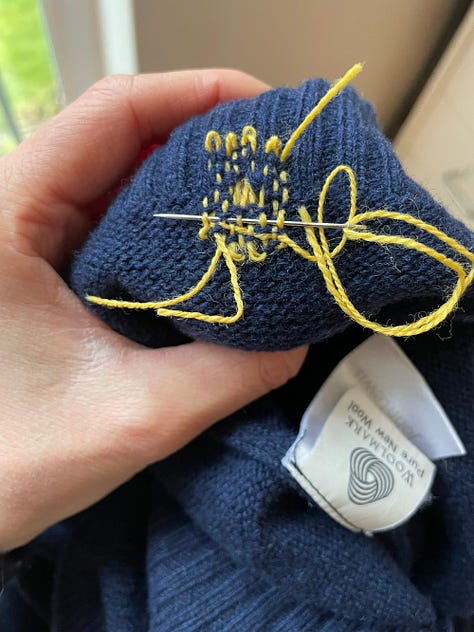
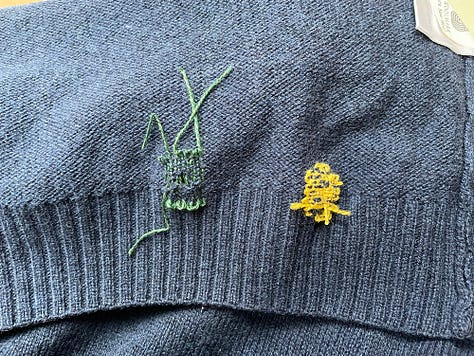
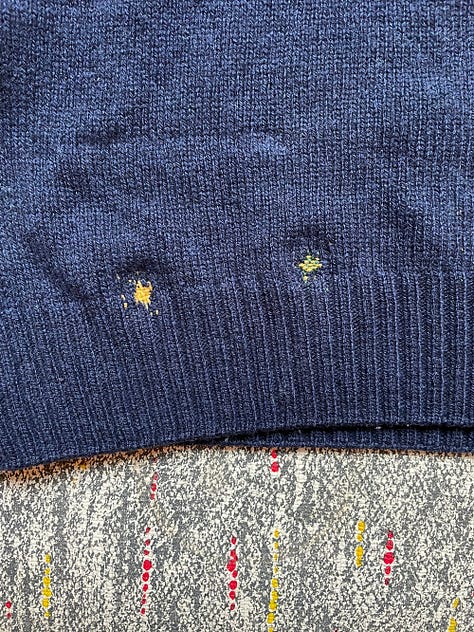
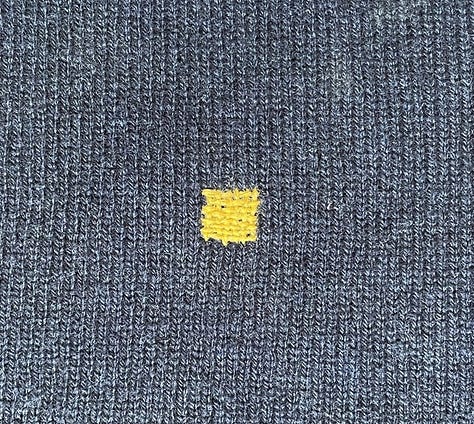
With so many holes I needed to keep the time spent on each darn to a minimum, so I didn’t make feature of all of them. Some of them were quite straightforward repairs, like the ones above.
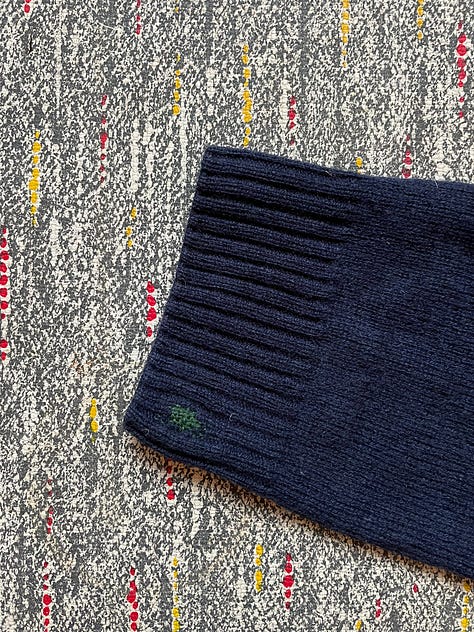
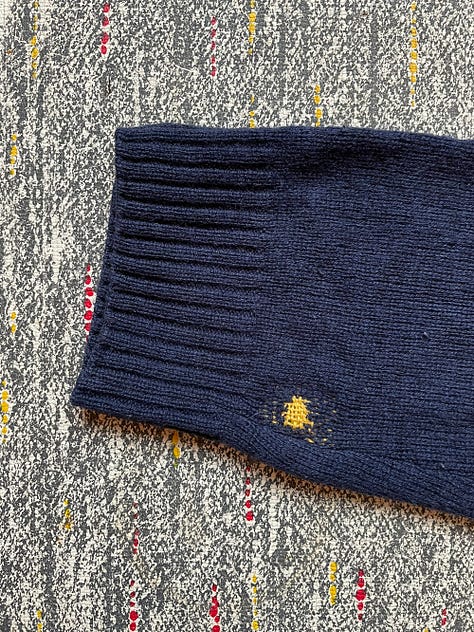
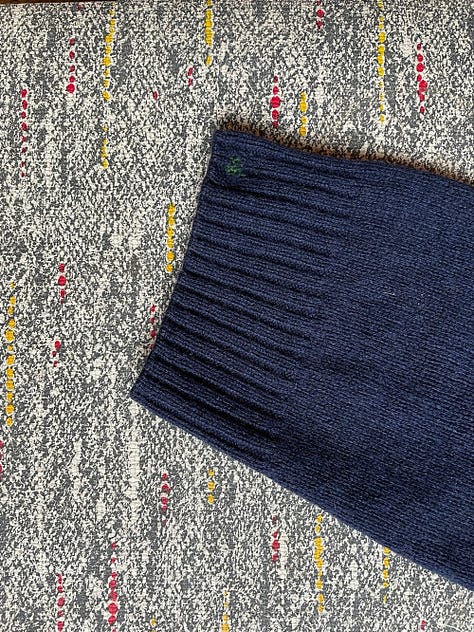
The cuffs were a little more complicated because the rib knit can’t be darned in quite the same way. Plus, on areas of more wear and stretch, such as elbows and cuffs, I needed to ensure the darns were really secure without being too tight. If there’s no room for stretch it can cause strain, resulting in further holes on the edge of the darned area.
You can allow for movement by making sure the loops of your stocking darn are long enough at the end of each row so there is sufficient give and stretch (see the middle image in the elbow repair below).

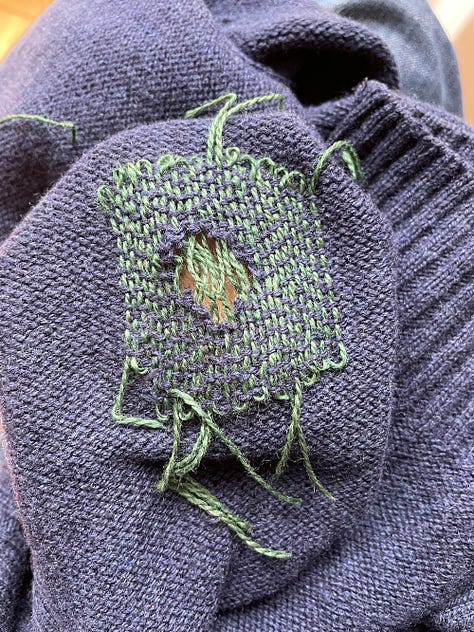
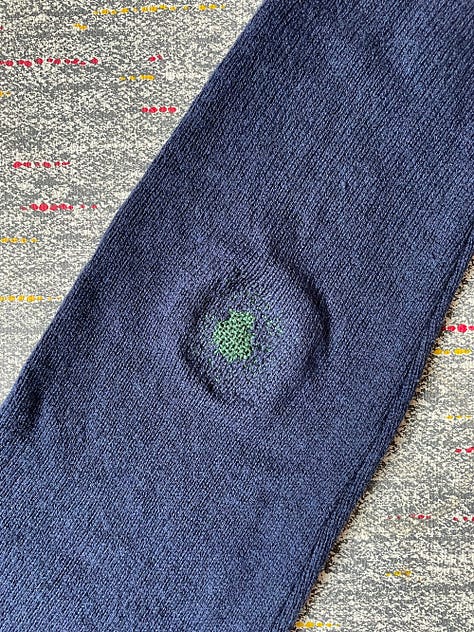
The elbow hole wasn’t the biggest I’ve seen but the knit around the hole had thinned so I opted for a decent darn on the reverse to strengthen the area.
Ordinarily I might tell you in more detail how I did the repair, but that would make this pretty lengthy, and Substack is already telling me that this post is getting too long for email! Hopefully this has served as inspiration for fixing any holes you find in your beloved jumpers this autumn.
My mending kit for this repair:
Yellow darning yarn
Green darning yarn
Needle
Darning mushroom or other darning aid such as a ladle, orange or tennis ball
Snips or scissors
What’s coming up this week:
My mending pile: I’m coming down with an autumnal bug of some sort and although I like to think I can cosy up on the sofa and do some darning, the reality will no doubt be different. The mending pile is huge and I don’t think I’ll get much done this week if I’m really honest with myself.
Next week on the mending kit: some cosy socks that I took to an ice music festival.
Thank you for reading The Mending Kit. If you’re enjoying it, please do share it, ‘like’ it, subscribe, or leave a comment below. It really means a lot to get feedback!



